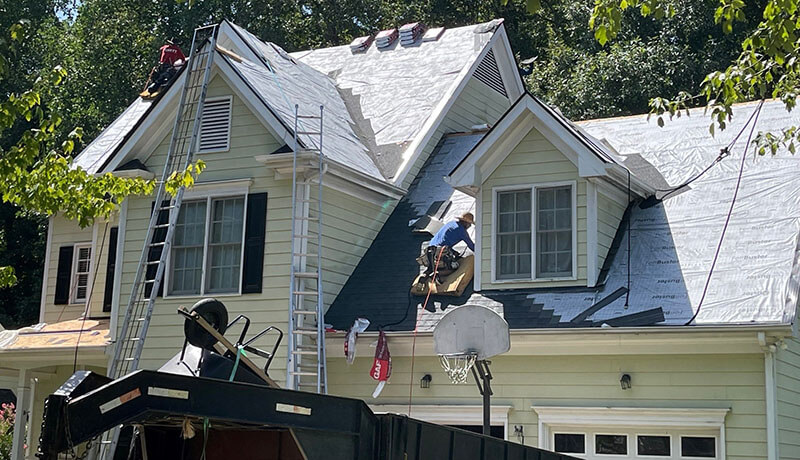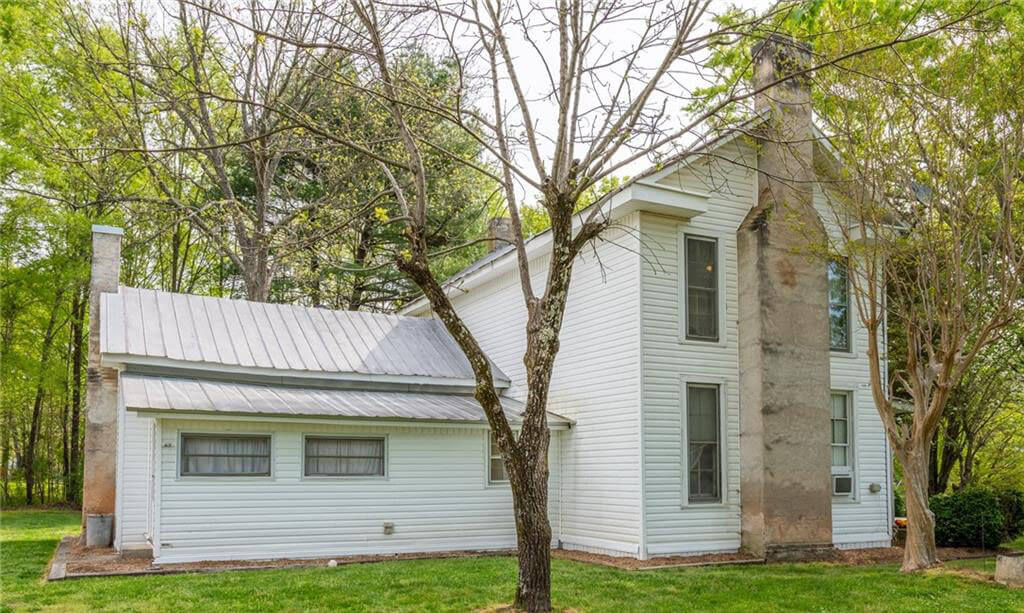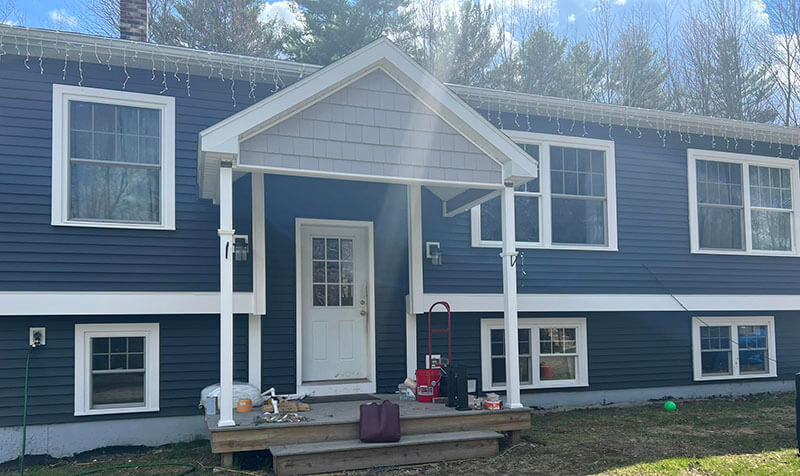Summer has come. House owners also have come up with their typical queries. Heat reduction and roof cooling are the most popular topic I discuss with them in summer. So, I have decided to write a blog about this and its related queries.
However, heat reduction in the house roof is a 50-50 job. It means both roofers and house owners have equal contributions to heat reduction. In another sense, it’s a prevention-protect process. Confused?
Read the post to the end. You will be clear about it.
Quick Jump
Understanding heat traps in house roof

I know you have come here to learn about the heat reduction process on the house roof. But before that, you should understand the reasons and consequences of roof heat. Once you understand the problem, you can solve or minimize it.
Reasons for heat traps in house roof
When the roof is exposed to consistent sunlight, it traps heat within it. But all roofs don’t have the same degree of heat trap. It is different for different types of roofs. It’s because the degree of heat trap depends on various factors. I am discussing the primary 2 of them.
- Roofing material: Sunlight can’t heat the roof unless the shingles absorb heat. Shingles made of wood, caulk, or paper tend to absorb heat. They trap the heat in the roof and keep heating the house. However, the color used in the roof also influences the heat trap. Dark color tends to absorb more heat than a light color. If the roof has a dark color coating, the degree of heat trap will be higher.
- Roof construction: Alongside the material, roof construction also plays a vital role in the heat trap. While roofers install the roof, they make it as waterproof as possible. Thus, breathability is often ignored or compromised. The roof becomes too compact that no air can circulate through it. Even if roofers keep small gaps between shingles, the roof becomes airtight due to heat expansion. As a result, heat gets trapped in the roof.
Consequences of heat traps in house roof
It’s easy to say that roof heat traps cause temperature hikes inside the house. But you may don’t know the consequence of the temperature hike. It has a significant impact on human health and the roof itself. Let me explain.
- Human health: Temperature hikes inside the house cause sweating. Sweating leads to discomfort and suffocation. If the temperature increases to 45 ℃, dehydration, and heat stroke may occur.
- The roof: Not only the human body but also the roof is affected by the heat trap. When the temperature rises, the roof starts damaging. If the roof has asphalt shingles, it expands due to temperature hikes. As a result, cracks or leaks frequently appear in the summer. Besides, asphalt or caulk shingles are vulnerable to heat blister. So, heat blisters also appear when it’s too hot.
Preventive steps to reduce heat in house roof

These are the steps you should take during or before even roofing. But these steps will eventually play a vital role in heat reduction. If your roof is not yet built.
Tip-1: Use the suitable roofing material
Choosing a suitable roofing material can reduce 50% of the heat in the house roof. In tropical countries, summer is the most prominent season. Here metal, clay, or even concrete roof works better. Because they reflect more heat than absorb it. Besides, they work as insulators and don’t transfer heat inside the house. Here are some types of roofs I suggest for summer.
- Metal: Metal absorbs heat quickly. That’s why people think it increases heat in house roofs. But in reality, metal holds the heat within it instead of releasing it. It works better with insulators or reflective coatings. That’s how metal can reduce heat in a house roof.
- Cool Asphalt: Cool asphalt shingle is also a good option for reducing roof heat. It comes with a reflective layer. So, it can reflect sunlight in a major portion. Besides, it’s made of fiberglass materials, which are great insulators of heat.
- Clay: Clay is the simplest shingle you can get for summer. It’s a super insulator that doesn’t absorb heat. Besides, it keeps the house cold if there is good ventilation. So, clay shingles are a good option for roof heat reduction.
- Slate: Slate is one of the most versatile shingles I can suggest. It has a beautiful appearance and long durability. But most importantly, it’s resistant to all weather. It has waterproofing properties and heat resistance as well. Considering the heat resistance, it has a glossy texture that reflects sunlight. The base material also plays a vital role in heat rejection.
- Concrete: Though concrete is heavy as shingles, it has properties that help in heat reduction. It’s a composite material that has a compact construction. It helps to prevent the heat wave from penetrating inside. Again it can absorb moisture that helps to keep the roof cool.
Tip-2: Ensure breathability
When roofers install the roof, ensure sure they make it breathable enough. Traditional plain slop roof construction is too compact. It provides excellent waterproofing but zero breathability. Whereas gravel or buildup construction offers enough space to circulate or hold air. This layer of trapped air work as an insulator on the roof. Thus a significant amount of heat in the house roof reduces. Here are some roof constructions effective for heat reduction.
- Buildup roof: Roofers use a step-down method to install a buildup roof. Besides, you will see multiple layers in this type of roof. Thus, it makes the roof breathable without compromising waterproofing. Due to a non-smooth texture, a buildup roof can trap more air than a plain roof. Thus, insulation increases and heat reduce on your house roof.
- Gravel texture: Another way to heat reduction is to give the roof gravel texture. Roofers add a reflective stone layer to impart this texture. It helps to reflect sunlight and provide insulation. However, this texture mostly comes together with the buildup construction. So, you should give them a shot.
Tip-3: Use attic insulation
Attic insulation is a permanent solution to house roof heat. You can integrate it while the roofer is installing the roof. It works as an insulator and provides extra ventilation to your house. Thus, the roof heat reduces by attic insulation.
Tip-4: Provide shed to roof
The best solution to reduce heat is to prevent direct sunlight to the roof. It may sound silly, but it works. Provide sheds to your roof. How?
Simple! Plant big trees around your house. When they rise above your house, they will give a shed to the roof. Thus you can save the roof from direct sunlight. As a result, a significant amount of heat will be reduced. Besides, trees provide a better environment for living. So, you must think about it.
How to reduce heat in house roofs?

The steps below can help reduce heat if the roof is already built. Choose one or more that are suitable for your home.
Tip-1: Apply reflective coloring/coating
It’s the most affordable way to reduce heat in a house roof. Applying reflective color or coating on the roof will reflect the sunlight and absorb less heat. Thus you can reduce heat in the house roof. Here are the reflective color or coating you can apply on your roof.
- White lime: White lime can be a temporary solution to summer heat. It’s too cheap and too easy to apply. It can reflect 30 to 60 percent heat, depending on the shade. Of course, it washes away in the rain. But it can be a one-time solution for this summer if you reapply it.
- Permanent coating: If you want a better solution, spend a little to apply permanent paint or coating. It is waterproof and sustains for 2 to 5 years. However, white or silver paint is most suitable for heat reflection. Choose one that goes better with your house.
Tip-2: Create a rooftop garden
It’s the most beautiful way to reduce heat on a house roof. Of course, you must maintain it to make it work. You can save the roof from direct sunlight with a rooftop garden. Plants absorb Carbon dioxide and release Oxygen. Thus it reduces heat in the house roof. Besides heat reduction, a rooftop garden has many other benefits. It makes the roof beautiful and provides a better living environment.
Tip-3: Install solar panels
Though a bit costly, it’s a fantastic idea to reduce heat. If you can cover the maximum area of your roof with solar panels, it will absorb 60 to 70 % of heat. Thus, heat will reduce by a significant amount. Not only that.
That much solar energy can fulfill a significant portion of your home’s electricity demand. It’s a good use of renewable energy to make your home eco-friendly and smart.
Tip-4: Roll out insulator foam/membrane
This is the permanent solution for heat in the house roof. If you are willing to spend some bucks, this method is best for heat reduction. Insulator foam or membrane is a layer generally spread above the roof. Here are various types of insulator foams or membranes you should consider.
- Aluminum: Aluminum is one of the most effective insulators for roofs. It’s easy to install and lasts longer because of its moisture resistance property. It comes in foil form that also has air bubbles inside. This system effectively prevents roof heat from going inside the house. It is also compatible with other insulators. So you can use it without any worry.
- Fiberglass: Glass is, in general, an excellent insulator of heat. When it comes in fiber form, it becomes stronger and more durable. So, you can get a fiberglass sheet and easily use it as a roof insulator. It will effectively reduce heat and prevent moisture. A drawback you can find here is its high price.
- Polyethylene: You can also consider polyethylene sheets as roof insulators. It is cheap in price and widely available in the market. Besides, it is flexible and moisture-resistant. A little problem with polyethylene is that it has a low melting point (120-130 ℃). So, it can melt or bend when the temperature is too high. Still, you can use it to prevent sun heat.
- Polystyrene: Polystyrene is better than polyethylene in many ways. It has better heat reduction quality and higher moisture resistance. But it has lower flexibility and durability. That’s why it’s a bit difficult to install. But once you install it, you will get better performance than polyethylene.
- Polyurethane: If you want a polymeric insulator, it will be the best option, in my opinion. It has better insulation properties and moisture resistance. Besides, it is more flexible, so it lasts longer. Polyurethane last longer than any other polymer because of its high melting point. So, you can use it as a roof insulator without any worry.
Tip-5: Install a roof misting system
The above method can reduce the roof heat to some extent. If you want to actually cool down the roof, you must do it externally. Spreading water through the roof is the way. But doing it manually is difficult. That’s why a roof misting system is essential. It’s an automatic system of spreading cold water through the roof. You can hire roofers to install this system.
Conclusion
In summer, staying inside a house is quite difficult. It’s too hot and uncomfortable as well. Besides, high temperature is also bad for the roof itself.
However, I have explained the reason and consequence of the heat trap in the house roof. Besides, I discuss the process of heat reduction or roof cooling. If you follow them correctly, heat will decrease by a significant amount.
I hope you have done it correctly. I hope you stay chill and live comfortably this summer.
Cheers!

Roger Lewis is an experienced roof repair contractor with over 15 years of industry experience. He is known for his expertise in all aspects of roof repair, including leak detection, shingle replacement, and gutter repair.
